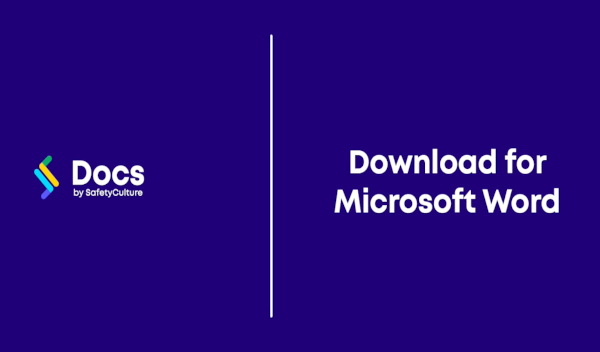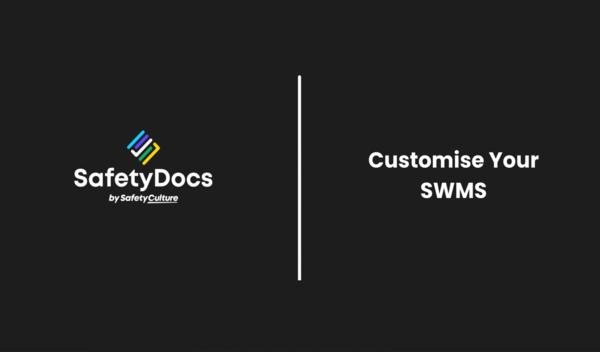Mini Loader Operation Safe Work Method Statement
- Instant Document Delivery via Email.
- Add to your existing management system.
- Can assist in ensuring workers are adequately trained.
- Customisation instructions provided.
- Microsoft Word Format (Fully editable).
- Only pay once (no subscriptions required).
Mini Loader Operation Safe Work Method Statement (SWMS)
This Mini Loader Safe Work Method Statement (SWMS) covers hazards and controls with the view of ensuring that all reasonably practicable steps have been taken to prevent the likelihood of an incident during the operation of a mini loader and attachments.
Job Steps Covered in Mini Loader SWMS:
- Working Outdoors: Addresses weather-related risks with control measures for extreme conditions.
- Working Alone: Outlines emergency controls and the importance of communication.
- Arrival On-site & Assess On-site Conditions: Focuses on initial site assessment and safety measures.
- Work Area Set-up: Details on securing the work area to prevent unauthorised access.
- Environment: Covers environmental impact considerations and control measures.
- Housekeeping: Emphasises the importance of maintaining a clean and safe work area.
- Manual Tasks: Discusses measures to prevent musculoskeletal injuries.
- Delivery, Set-up & Removal of the Machine: Safety protocols for machine transportation and setup.
- Establish a Communication System with Ground Workers: Effective communication to prevent injuries.
- Machine Operation: Guidelines for safe operation and emergency response.
- Lifting the Machine with a Crane or Excavator: Safety measures for lifting operations.
- Trenching & Digging: Precautions and control measures for safe trenching and digging.
- Working near the Powered Mobile Plant: Safety when working in proximity to mobile plants.
- Excavating near Underground Services: Control measures to avoid damaging underground services.
- Working on Residential Properties (children on site): Special considerations for residential work sites.
- Changing Attachments: Safety measures for changing machine attachments.
- Operations with Hydraulic Attachments: Guidelines for the safe use of hydraulic attachments.
- Fuelling the Plant: Control measures to prevent fire or explosion during refuelling.
- On Completion: Final checks and control measures for site safety post-operation.
- Emergency Response: Outlines emergency response actions.
Each purchase of our SWMS comes with a complimentary copy of the Legislation & Codes of Practice Reference List, valued at $19.95. This valuable resource provides an up-to-date overview of relevant laws and standards, further supporting your compliance efforts.
Key Features of the SWMS:
- Regulatory Compliance: Adherence to Australian legislation.
- Hazard Management: Comprehensive identification and control of workplace hazards.
- Customisable Content: Allows for easy addition or deletion of information to suit specific needs.
- Emergency response: Includes protocols for responding to incidents and injuries.
Who is it Suitable For?
This document is important for businesses involved in construction, landscaping, and any industry requiring the operation of mini loaders. It is particularly beneficial for:
- Machine Operators
- Construction Workers
- Safety Officers
- Site Supervisors
Ensure your team is equipped with the knowledge and tools to operate mini loaders safely. Get your copy today and commit to a safer work environment.
- Instant Document Delivery via Email.
- Add to your existing management system.
- Can assist in ensuring workers are adequately trained.
- Customisation instructions provided.
- Microsoft Word Format (Fully editable).
- Only pay once (no subscriptions required).
Mini Loader Operation Safe Work Method Statement (SWMS)
This Mini Loader Safe Work Method Statement (SWMS) covers hazards and controls with the view of ensuring that all reasonably practicable steps have been taken to prevent the likelihood of an incident during the operation of a mini loader and attachments.
Job Steps Covered in Mini Loader SWMS:
- Working Outdoors: Addresses weather-related risks with control measures for extreme conditions.
- Working Alone: Outlines emergency controls and the importance of communication.
- Arrival On-site & Assess On-site Conditions: Focuses on initial site assessment and safety measures.
- Work Area Set-up: Details on securing the work area to prevent unauthorised access.
- Environment: Covers environmental impact considerations and control measures.
- Housekeeping: Emphasises the importance of maintaining a clean and safe work area.
- Manual Tasks: Discusses measures to prevent musculoskeletal injuries.
- Delivery, Set-up & Removal of the Machine: Safety protocols for machine transportation and setup.
- Establish a Communication System with Ground Workers: Effective communication to prevent injuries.
- Machine Operation: Guidelines for safe operation and emergency response.
- Lifting the Machine with a Crane or Excavator: Safety measures for lifting operations.
- Trenching & Digging: Precautions and control measures for safe trenching and digging.
- Working near the Powered Mobile Plant: Safety when working in proximity to mobile plants.
- Excavating near Underground Services: Control measures to avoid damaging underground services.
- Working on Residential Properties (children on site): Special considerations for residential work sites.
- Changing Attachments: Safety measures for changing machine attachments.
- Operations with Hydraulic Attachments: Guidelines for the safe use of hydraulic attachments.
- Fuelling the Plant: Control measures to prevent fire or explosion during refuelling.
- On Completion: Final checks and control measures for site safety post-operation.
- Emergency Response: Outlines emergency response actions.
Each purchase of our SWMS comes with a complimentary copy of the Legislation & Codes of Practice Reference List, valued at $19.95. This valuable resource provides an up-to-date overview of relevant laws and standards, further supporting your compliance efforts.
Key Features of the SWMS:
- Regulatory Compliance: Adherence to Australian legislation.
- Hazard Management: Comprehensive identification and control of workplace hazards.
- Customisable Content: Allows for easy addition or deletion of information to suit specific needs.
- Emergency response: Includes protocols for responding to incidents and injuries.
Who is it Suitable For?
This document is important for businesses involved in construction, landscaping, and any industry requiring the operation of mini loaders. It is particularly beneficial for:
- Machine Operators
- Construction Workers
- Safety Officers
- Site Supervisors
Ensure your team is equipped with the knowledge and tools to operate mini loaders safely. Get your copy today and commit to a safer work environment.


